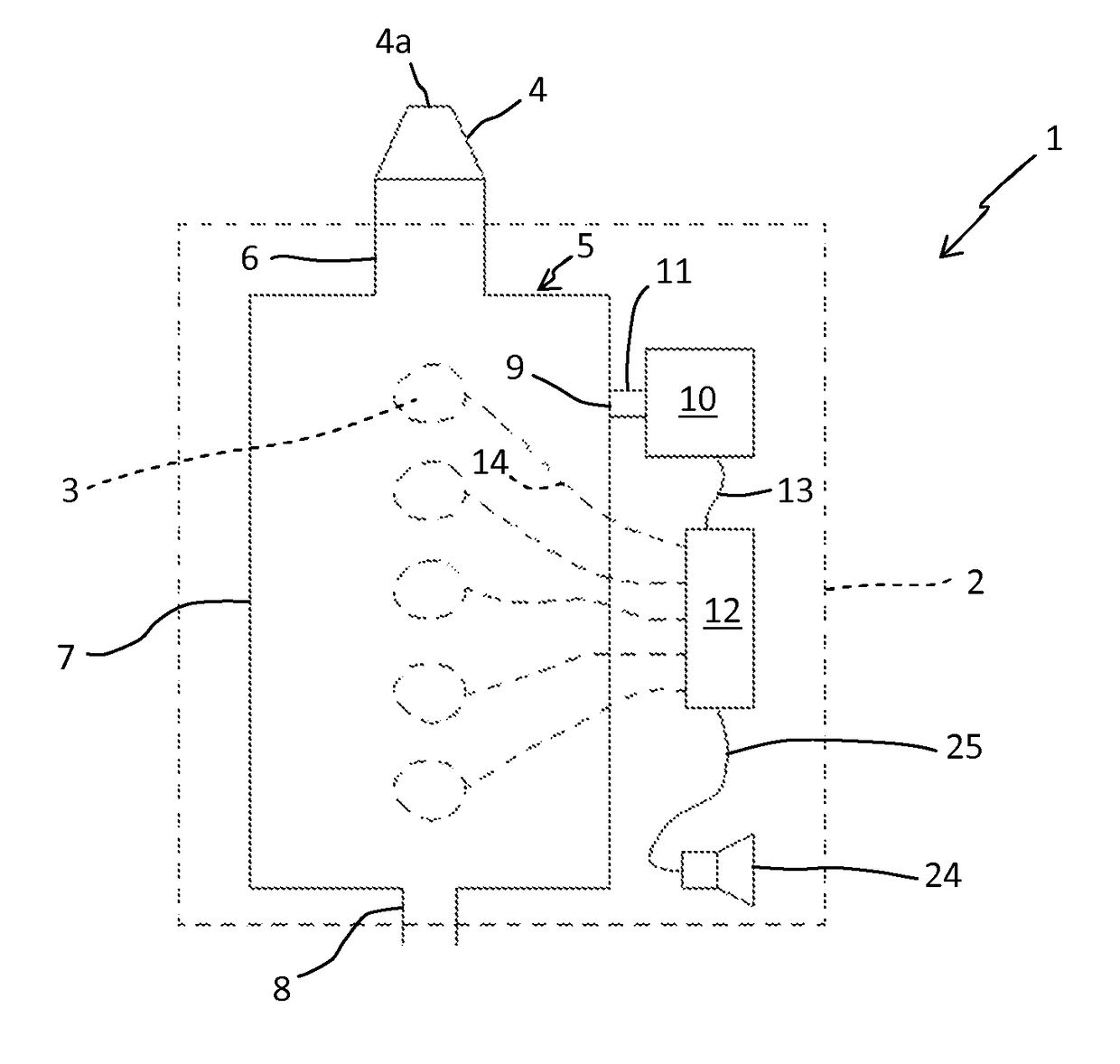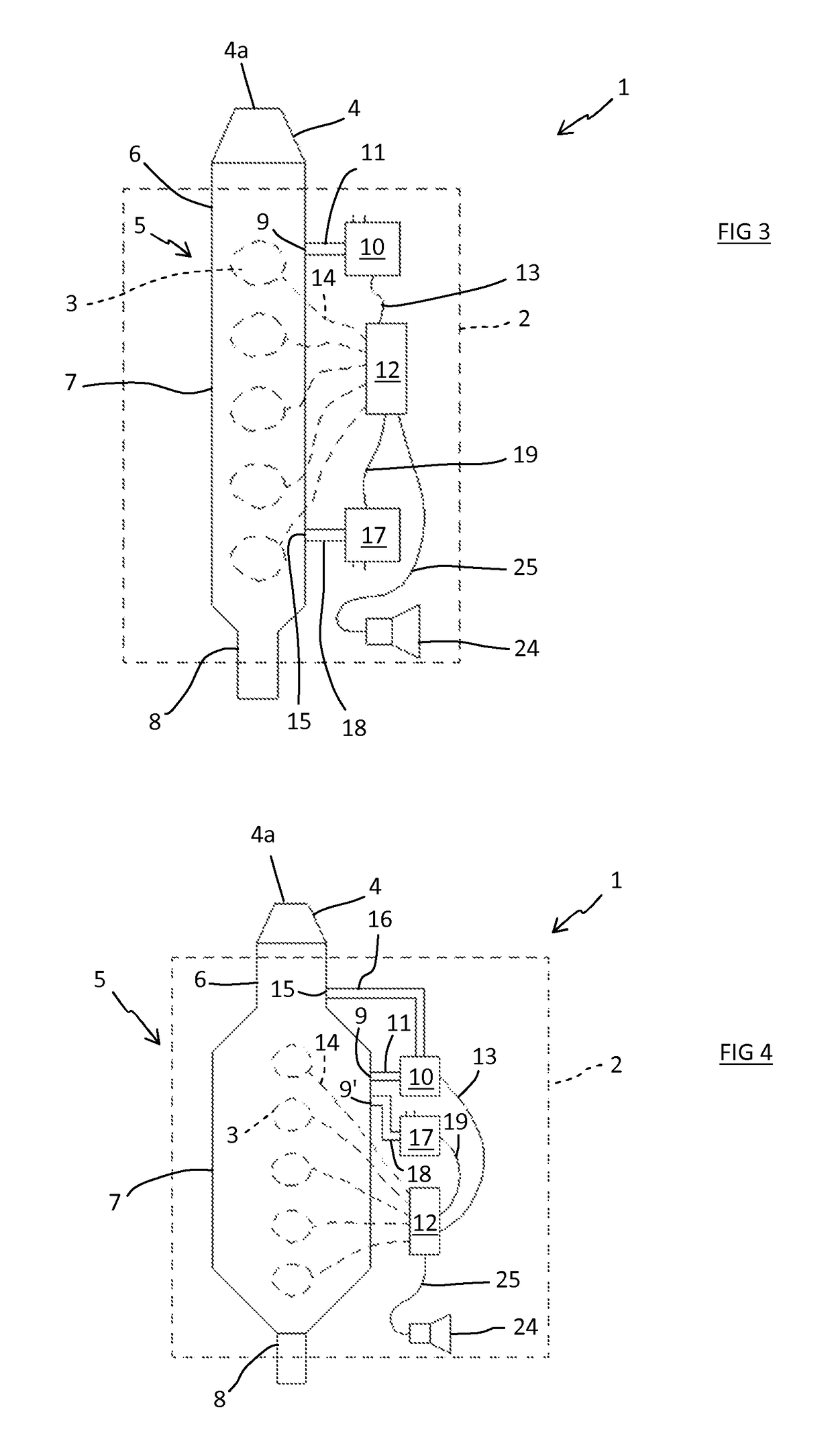Electronic woodwind instrument
a woodwind instrument and electronic technology, applied in the field of electronic woodwind instruments, can solve the problems of insufficient alternative embodiment, insufficient design, and insufficient design of acoustic wind instruments
- Summary
- Abstract
- Description
- Claims
- Application Information
AI Technical Summary
Benefits of technology
Problems solved by technology
Method used
Image
Examples
Embodiment Construction
[0031]The following description attempts, in particular, to describe the design of the channel and the realisation of the pressure sensor or sensors on this channel. In the rest of the description, the same references are used to describe the same elements or equivalents thereof according to the various embodiments.
[0032]In FIGS. 1 to 3, the instrument 1 comprises a body 2 on which keys 3 are arranged, said elements being illustrated as dashed lines. The body 2 can have various shapes and the keys 3 can have various positions and, for example, will correspond to those of acoustic wind instruments such as a clarinet, a saxophone, a trumpet or others. The keys 3 are preferably capacitive, enabling signals or electrical impulses to be generated on simple contact of the fingers on the keys. Mechanical keys 3 could however also be envisaged, or other technologies for detecting the presence of a finger, without going beyond the scope of the invention.
[0033]The instrument 1 comprises a mou...
PUM
 Login to View More
Login to View More Abstract
Description
Claims
Application Information
 Login to View More
Login to View More - R&D
- Intellectual Property
- Life Sciences
- Materials
- Tech Scout
- Unparalleled Data Quality
- Higher Quality Content
- 60% Fewer Hallucinations
Browse by: Latest US Patents, China's latest patents, Technical Efficacy Thesaurus, Application Domain, Technology Topic, Popular Technical Reports.
© 2025 PatSnap. All rights reserved.Legal|Privacy policy|Modern Slavery Act Transparency Statement|Sitemap|About US| Contact US: help@patsnap.com



